Instructions for growing a tomato "Raspberry ringing": enjoy the beautiful large fruits
Monuments are erected not only to famous people, but even to vegetables! For example, in Ukraine there is a monument called "Glory to the Tomato". A red liquid tomato sits on a stone pedestal. This is not surprising, because tomatoes are widespread throughout the world and are included in thousands of delicious dishes.
Every gardener dreams of growing a rich harvest of tomatoes, especially since there are many varieties today. Let's pay special attention to the variety called Raspberry Chime. Let's find out where such an unusual name came from and how to get delicious tomatoes.
The content of the article
Description of the variety
Tomatoes Raspberry Jingle is a hybrid of a new generation, which has excellent yields and strong immunity to common tomato diseases.
The variety grows to about 1.2 m in height. The roots are strong, the bushes are powerful and developed. The leaves are dark green, slightly ribbed.
Distinctive features
Refers to medium early, ripens within 90-100 days from the moment of planting. The Crimson Ringing got its name from the delicate crimson color of the tomatoes. They are formed together, 5-7 on each brush. The plant is compact, after pouring tomatoes it stops developing.
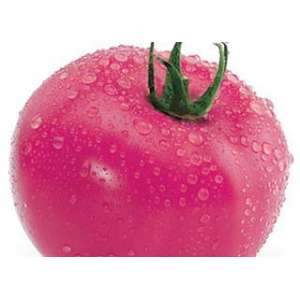
Characteristics of tomatoes and productivity
A smooth, rounded tomato weighs about 150 g. The skin is glossy and dense, which makes the Raspberry ringing excellent kept... The pulp is moderately juicy, not watery.
There are few seeds, they are unevenly distributed. Also, vegetables ripen well after picking in a dry and cool place. From one bush, the hybrid brings about 5 kg of beautiful vegetables.
How to grow seedlings
Seedlings are prepared 60 days prior to disembarkation. The variety is grown both outdoors and in greenhouses or greenhouses. The place of cultivation depends on the natural conditions of the region.
Seed preparation
Hybrid seeds can be purchased at the store or ordered by mail. Even if the manufacturer guarantees the safety and purity of the material, it will not be superfluous to disinfect the seeds.
Disinfection will destroy pathogens of dangerous infections, prepare the plant for planting. To do this, place the seeds in a cloth bag, which you put in the solution. potassium permanganate for 20 minutes. Then take out the material and dry it by simply spreading it out on the table.
An important stage in seed preparation is germination. The seeds are placed in damp gauze and placed in a warm place for 1-2 weeks. Thus, the degree of germination of seeds and their quality are checked.
Important! Use growth promoters to speed up germination. "Zircon" and "Fitosporin" are recognized as effective drugs. The funds not only stimulate the development of seeds, but also improve their immunity, prevent their infection with fungi. The funds are sold in the form of a powder or solution. Be sure to read the instructions before use.
Capacity and soil
It is most convenient to grow seedlings in ordinary wooden boxes. They are environmentally friendly, affordable and easy to use. It is convenient to care for the sprouts, and the boxes themselves can be moved if necessary. Putting together boxes from ordinary boards is not a big deal. Also, do not forget to make a tray for each drawer.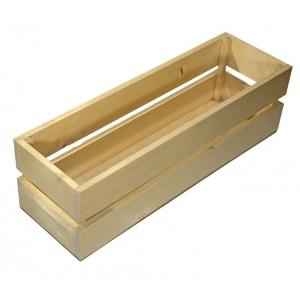
Important! In addition to boxes, seedlings are grown in flower pots, plastic cassettes or special containers. The main thing is that the container is dry and clean.
Ready-made seedling soil can be purchased at the store. These nutritional compositions are already saturated with all vitamins for the future plant, have the required level of acidity, do not contain insect larvae and debris. The mixture "Universal" is recognized as an excellent soil.
Sowing
Wash the container and dry well. Then place the soil in it, filling 1/2 part. Make grooves in the soil about 2-3 cm deep, place the seeds in them. Sprinkle earth on top and pat. Do not forget to water the seedlings abundantly with warm filtered water after sowing.
Advise write the name of the variety and the date of planting on the sticker, especially if you are planting other varieties in addition to the Raspberry Ringing. Convenient marking will not allow you to get confused in varieties and forget the date of planting.
Growing and care
Do not overheat the seedlings, as too much heat will make them weak. The ideal temperature should be at least 23 degrees. But the seedlings are very fond of light, so put the boxes with them in the brightest place in the house. A windowsill is perfect, provided there are no drafts or hot batteries.
Moisten the soil abundantly, but let it dry well between watering. The first watering occurs 10 days after disembarkation. Remember that too much water increases your risk of disease. Avoid getting moisture on the stems and leaves.
Seedlings must be hardened - take it out to the balcony, first for 2-3 hours, then increase the time. This is especially true for those who plant the Crimson Ringing under the open sky, and not in a greenhouse. Such procedures make tomatoes stronger.
Important! To make the leaves become stronger and more flexible, give the sprouts a kind of "massage sessions". Just periodically stroke the leaves with your fingertips. This proven method helps the seedlings adapt more quickly to mechanical stress.
How to grow tomatoes
Raspberry care miracle takes a minimum of time and effort. This is one of the reasons for the popularity of the variety among gardeners.
Landing
The best precursors for Raspberry Jingle are legumes, onions, and peppers. Prepare the beds, remove all debris and dig up the ground. Tomatoes should be at a distance of 40-50 cm from each other. This is necessary so that the roots develop and do not interfere with each other. Once the seedlings are in the ground, pour water over them.
Important! The first time to dig up the ground is best in the fall. To create favorable conditions, add sawdust to the ground, they are natural drainage. On the site, allocate a bright, spacious and calm place for tomatoes.
Care
Raspberry Jingle care is as follows:
- Regular watering. On average, 1 bush takes 0.5 liters. Watering frequency is about 7-10 days. Look at the weather: if the summers are hot and dry, then increase the amount of moisture. But do not overdo it, its excess leads to late blight. Watering is most effective when using a drip irrigation system. You can build it yourself from a regular hose and plastic bottles.
- Loosening the earth... As a result of loosening, the upper crust is destroyed and weed sprouts are destroyed. It also provides air to the roots, which is especially important. Frequent loosening reduces the evaporation of internal moisture, and water and liquid fertilizers are better absorbed into the ground.
- Weed removal. Often on the beds with tomatoes there are white scrub, ragweed, field bindweed. These and other weeds must be removed in time, since they live and feed on water and fertilizers intended for tomatoes. Especially a lot of weeds appear after dew and rains.
- Mulching... The procedure consists of placing different materials on tomato beds. Organic mulch is especially effective: straw, humus, compost.They provide extra protection for tomatoes and also nourish them.
- Complex fertilizers... The first feeding is done after 20 days. A nettle-based solution is perfect for her. Subsequent fertilization is applied every 15-20 days. Tomatoes are especially fond of nitrogen-containing substances. However, be careful, too much of them will only hurt.
Features of cultivation and possible difficulties
In the process of growing, gardeners are faced with the problem of yellowing and drying out of leaves.... This is due to the fact that the body lacks macronutrients - phosphorus, potassium or magnesium. To solve the problem, superphosphate, potassium nitrate or potassium humate are used. If timely measures are not taken, the flowers fall off, the ovaries are poorly formed.
A lack of nitrogen leads to the formation of chlorosis. The leaves are depleted, the stem hardens and takes on a red tint. To prevent chlorosis, use a nutrient solution: 9 l of liquid manure, 25 g of dry nitrate, 80 g of wood ash. Tomatoes are watered abundantly. The solution must be used at least 2 weeks before harvest.
Diseases and pests
The hybrid has excellent resistance to fungal infections. However, sometimes the tomato still gets sick. late blight, septoria or alternaria. With late blight, brown spots appear, with septoria, yellow leaves are visible, and Alternaria manifests itself in the form of depressed dark spots on the leaves and stem. Spray the plant to prevent fungal diseases bordeaux liquid. The main thing is to wear protective clothing, gloves and goggles before processing.
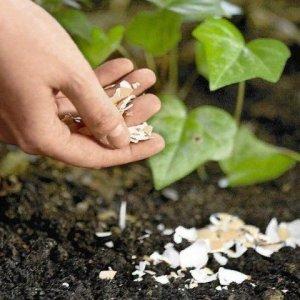
Of the pests, a wire beetle attacks the Crimson Ringing. It damages the root system, which disrupts metabolism and stops feeding into the bush.
For preventive purposes, use dry eggshells. Scatter it on tomato beds and you can forget about the appearance of a wireworm.
The nuances of growing in open ground and in a greenhouse
In the greenhouse, the soil is cultivated in the fall. It is recommended to disinfect the soil and the structure with the help of fungicides. Fungicides are a group of drugs that prevent disease.
In addition to soil, also treat organic plant residues. "Quadris" is recognized as an excellent tool. This is a complex remedy that protects raspberry ringing, powdery mildew, white spot.
When growing tomatoes in the open field, pay attention to the "neighbors" of the crop. It is not advised to plant tomatoes next to potatoes or other varieties of tomatoes. In the case of a disease of one bush, the likelihood of infection of all the others increases. Also, experienced farmers plant basil near tomatoes. This herb improves the palatability of Raspberry Jingle.
Harvesting and application of the crop
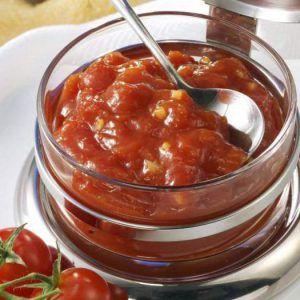 Avoid overripening tomatoes, harvest them as soon as they ripen... Pull gently without damaging the stem and the stem itself. Dry weather is ideal for harvesting. If you pick the tomato at the milky stage, place it in a dark place to ripen on its own.
Avoid overripening tomatoes, harvest them as soon as they ripen... Pull gently without damaging the stem and the stem itself. Dry weather is ideal for harvesting. If you pick the tomato at the milky stage, place it in a dark place to ripen on its own.
Raspberry ringing is used for preparing salads, first and second courses. For example, a hybrid is great for baked dishes like lasagna, pizza, or julienne. The vegetable is also used in first courses: it is used to prepare borscht, kharcho or tomato puree soup.
In addition, the variety makes an excellent jam. Especially if you add ginger root, citrus fruits or vanilla to it.
Interesting! Tomato jam is perfect for meat dishes. Add basil and balsamic vinegar to the mixture.
Advantages and disadvantages of the variety
The hybrid is one big advantage. It is easy to care for, tastes great, looks good and keeps well. In addition, Raspberry Jingle is disease resistant and pest resistant.
Of the shortcomings, some gardeners note the poor education of stepchildren. More variety has no disadvantages.
Farmers reviews
Alexander, St. Petersburg: “I grow mainly hybrids. I love their disease and insect resistance. I like the raspberry ringing because it is tasty, moderately juicy. As a rule, 4-7 tomatoes were tied on the brush. They are all smooth and beautiful. "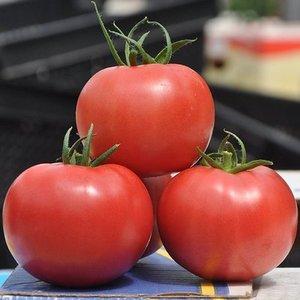
Nikita, Saratov region: “At first the tomatoes didn’t take root, they didn’t form vegetables well and slowly became full of color. But later everything returned to normal. Tomatoes are firm, strong aroma, tomato. I think I will grow more. "
Anastasia, Moscow region: “I planted the raspberry ringing in a reckless way, and in vain. The bushes quickly gained growth, but became thin and weak. In the end, the yield was below average, although I used chemical fertilizers. "
Conclusion
Against the background of most hybrids, Crimson Ringing stands out for its spectacular appearance. Glossy pink tomatoes are a favorite among gardeners.
In order not to buy tomatoes at the supermarket, plant the Raspberry Chime variety in your area. Even beginner gardeners can grow it. With a little effort, in 3 months you will be preparing delicious dishes from your own harvest.